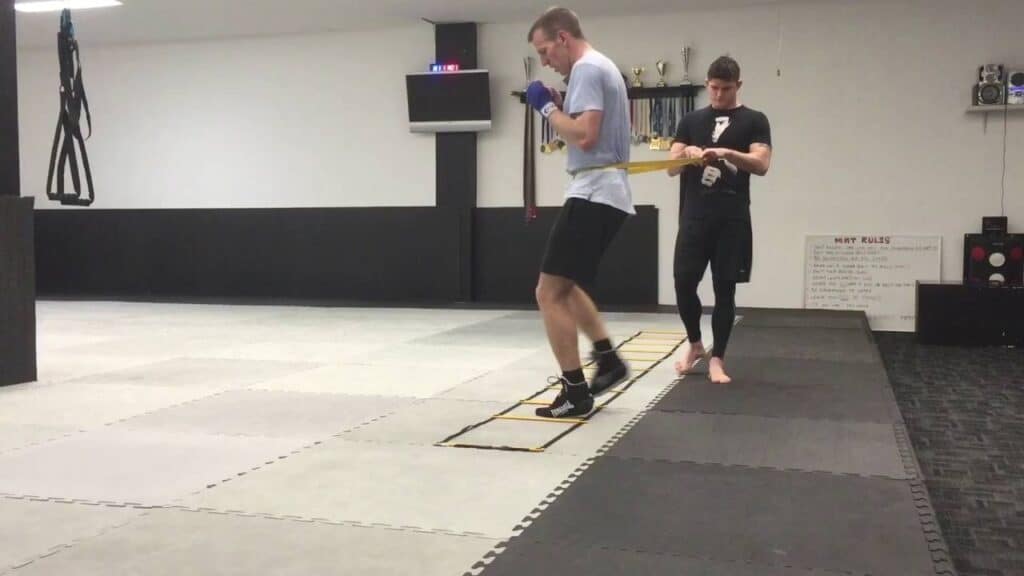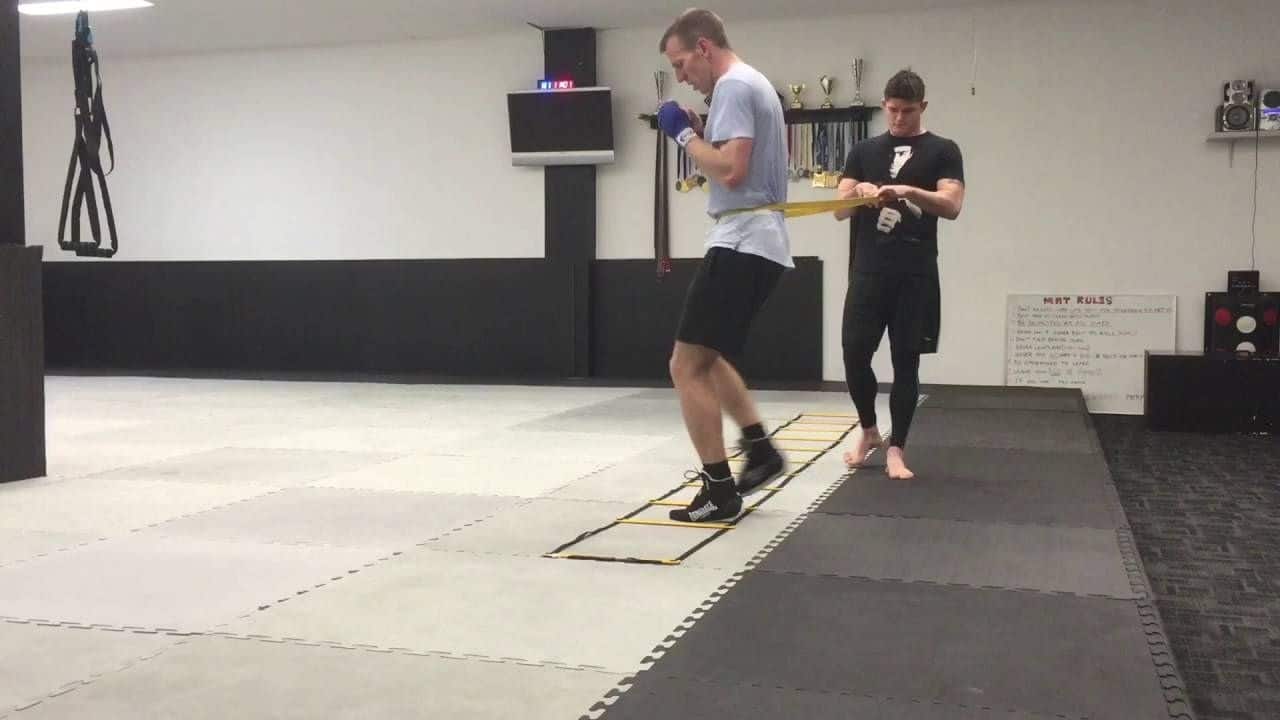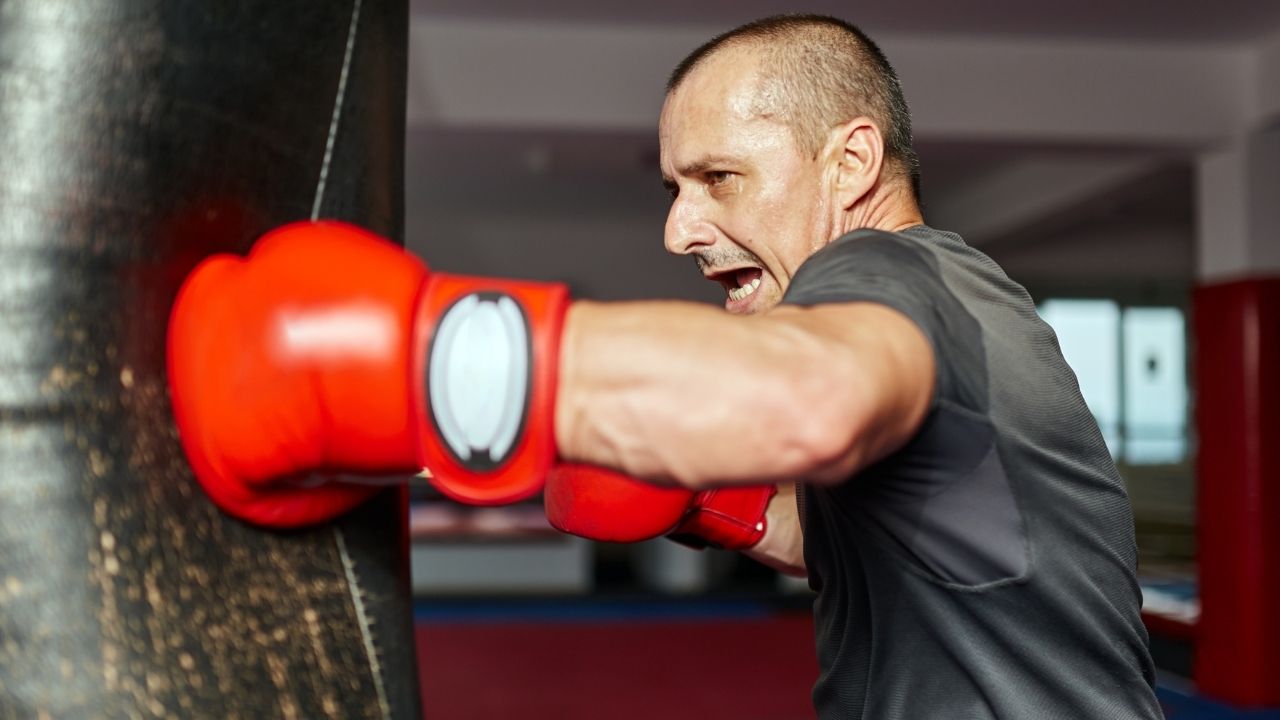Boxing is a sport that requires good footwork and body mechanics. Improving your boxing footwork can enhance your effectiveness and efficiency as a boxer. You can do many things to improve your footwork, such as cross-training, footwork drills, and agility ladder workouts.
This blog will teach you how to improve your boxing footwork and give you some tips on how to do agility ladder training for boxing.
What are the benefits of good footwork?

By learning proper boxing footwork, you’ll be able to land your punches more accurately and powerfully, and you’ll be able to avoid getting hit. In case of poor footwork, you might run into a punch quickly and be knocked out, and your punch won’t land where you intended. As such, the boxer’s footwork should maximize his or her efficiency in attacking and defending.
We can hit harder, we can get in position to hit, and we can get out of danger with good footwork. It lets us put our body weight behind our punches, so we hit harder. By moving and zoning to where openings may be available, it puts us in a good position to hit. Also, it keeps us out of danger by letting us move and evade attacks. More about footwork benefits.
What is agility training?
Agility means that you can start, stop, and change directions quickly while maintaining proper posture. Agility training is basically a type of exercise that involves short bursts of movement with many direction changes. It usually involves exercises such as ladder drills, where the exerciser has to do different foot patterns fast.
With lateral movements, your body is trained to smoothly step out to the side. As a result, your body becomes faster at changing directions. In a similar manner to plyometric exercises, lateral drills improve your body’s ability to slow down, stabilize, and then accelerate.
Why use an agility ladder for boxing footwork exercises?

Agility ladders are useful equipment for boxers to enhance their foot speed and coordination while improving their balance and coordination. No matter what your athletic ability is, you should include agility ladder drills in your workout routine regardless of whether you are a professional boxer or not.
You can increase stride length, speed, and agility on the track by incorporating ladder drills into your training program. You can implement agility drills to promote different footwork and movement patterns.
You can target the lower body’s fast-twitch muscles with agility ladder exercises. Your hamstrings, glutes, and hip flexors will become stronger and more flexible as well as your joints. In a nutshell, your leg strength will be much better.
Note: It’s just as important to have good defensive footwork as you have offensive powerful punches because it helps you avoid incoming punches and land clean ones. The defense skill can be drastically improved with lateral training.
It improves your boxing stance
Boxers need a solid boxing stance to maintain balance. All boxing moves, offensive or defensive, are based on maintaining balance. Body positioning is the key to achieving the correct fighting stance.
Besides the benefits mentioned above, boxing agility ladder training is beneficial for teaching the correct stance.
25 Boxing ladder drills
During this video, you’ll learn 25 ways you can improve your footwork using the agility ladder. You should enhance this skill regardless of whether you are fighting or boxing for fitness. You can boost your boxing movement and win more fights.
You’ll learn how to combine different boxing combos with fast footwork. Beginners should not be intimidated by the variety of exercises. Always focus on your form and take it slow. Keep trying even if something went wrong the first time. It takes time to learn to fight. In the end, it’s about how hard you work. (The lateral movement can be added as you develop the basic linear movements.)
Once you become familiar with these agility ladder boxing drills, you can create your own ladder workout to improve those skills you lack.
Here are some of the agility training exercises you learn:
- Forward and backward movements
- Stepping side to side
- Forward 2 steps, backward 1
- Moving forward with a 1-2
- Jabbing forward
- 1-2 hook, step left
- 1-2, step right
Other Techniques to Improve Boxing Footwork
- It’s no secret that jumping rope is an essential exercise for boxers. When you jump rope, you stay on your toes. It also helps increase endurance and leg strength which means you can move much faster.
- Perform plyometric exercises. Any conditioning exercise that involves explosive movement is considered a plyometric exercise. As a result, you gain explosiveness and agility. Some examples are various jumps such as the squat, box, or long jumps.
- Keep an eye on the boxer’s feet when watching a fight. Try not to focus on their hands but their feet, and you’ll see how you can improve. Muhammad Ali, Roy Jones Jr, and Mike Tyson can all help you.
- Your footwork will improve a lot while shadow boxing. Think you’re fighting an opponent and practice dodging, head movement, and pivots. If you can, practice in front of a mirror so you can see where you are failing.
- Try dancing. As a result of the dance, you became more adept at moving. It is vital to get the proper stance and distance when dancing. Additionally, dancing can improve your agility, rhythm, and reaction time.
To sum up
In this blog post, you’ve learned how to improve boxing footwork with agility ladder drills. There are many benefits, including moving faster, keeping your boxing stance, and improving your defensive and offensive skills and techniques. It’s also excellent boxing training for fitness. Let’s try these moves, and you’ll see how effective they are.
Sources:
- Sporiš, G., Milanović, L., Jukić, I., Omrčen, D. i Sampedro Molinuevo, J. (2010). The effect of agility training on athletic power performance. Kinesiology, 42. (1.), 65-72. Preuzeto s https://hrcak.srce.hr/54243
- Young, Warren B., Brian Dawson, and Greg J. Henry. “Agility and change-of-direction speed are independent skills: Implications for training for agility in invasion sports.” International Journal of Sports Science & Coaching 10.1 (2015): 159-169. https://journals.sagepub.com/doi/10.1260/1747-9541.10.1.159



